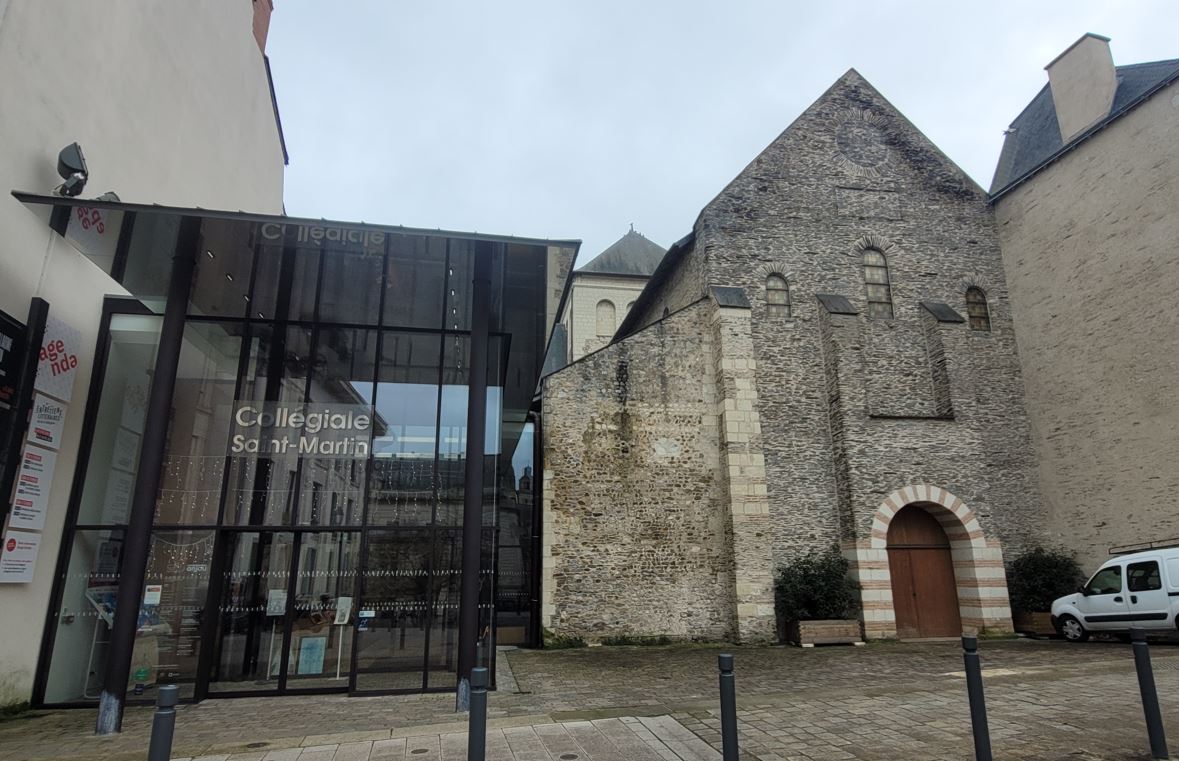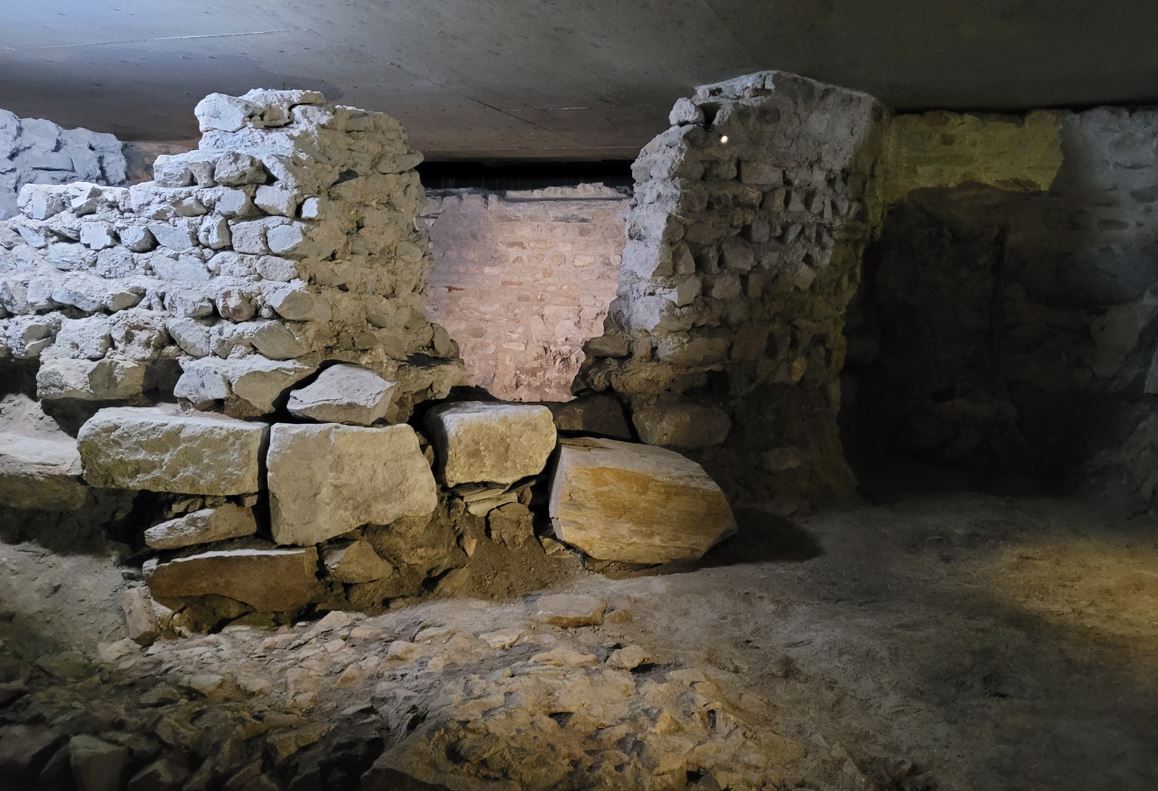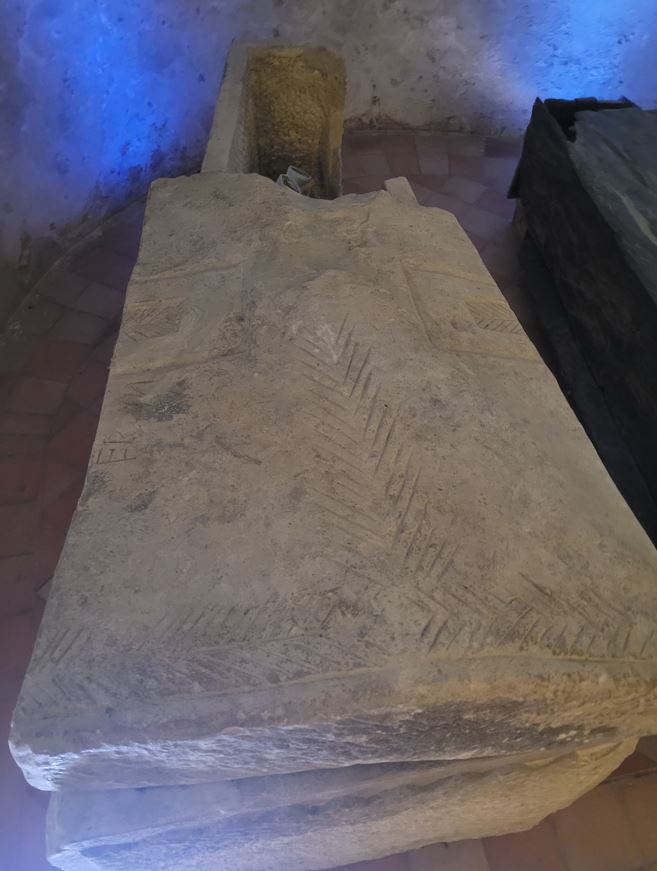Angers a un lien particulier avec saint Martin. C’est l’évêque d’Angers, Defensor, qui célèbre la messe d’ordination épiscopale de saint Martin (contre son gré), un autre évêque, saint Maurille, est un disciple de saint Martin et de saint Ambroise de Milan. Par ailleurs, saint Maxenceul, un autre évangélisateur de l’Anjou, est un disciple de saint Martin.
La première église Saint-Martin d’Angers date du Ve, et est agrandie au VIe et VIIe siècles. Le premier édifice a été construit pour accueillir la sépulture d’un évêque de la ville, sur un plan rectangulaire avec une abside outrepassée. Reconstruite au IXe siècle, elle reprend le plan de l’édifice précédent, avec un nouveau plafond qui serait dû, selon la légende, à Ermengarde (épouse de Louis le Pieux). L’église devient une collégiale en 1020, après une restauration commencée en 1012, à la demande de Foulque Nerra et son épouse Hildegarde, qui instituent un collège de treize chanoines. Elle est transformée dans le style gothique au XIIe siècle. La chapelle des Anges, datant du Haut Moyen Âge, est agrandie au XIIIe siècle. Elle est embellie et renforcée dans la deuxième moitié du XVe siècle par le roi René.
Le chapitre de chanoine est supprimé durant la Révolution française. Après la Révolution française, le chœur et le transept sert d’entrepôt de vin, de tabac et de bois. le clocher est démoli en 1829. Devenu le lycée Saint-Martin, le chanoine Pinier puis G. H. Forsyth, ont mené des fouilles archéologiques au XXe siècle. Les statues du chœur sont vendues à l’université de Yale et remplacées par des moulages. La vente permet de réunir les fonds pour sauver l’édifice. Elle devient par la suite la chapelle de l’institution Saint-Marille. Elle est acquise par le département du Maine-et-Loire en 1986 qui la transforme en salle culturelle. La crypte conserve de nombreux vestiges mérovingiens. En 2006, elle devient un lieu destiné à accueillir des manifestations culturelles.
Elle est classée au Monuments historiques le 21 janvier 1928. PA00108873
Angers has a special link with Saint Martin. It is the bishop of Angers, Defensor, who celebrates the episcopal ordination mass of Saint Martin (against his will), another bishop, Saint Maurille, is a disciple of Saint Martin and Saint Ambrose of Milan. Furthermore, Saint Maxenceul, another evangelizer of Anjou, is a disciple of Saint Martin.
The first church of Saint-Martin in Angers dates from the 5th, and was enlarged in the 6th and 7th centuries. The first building was built to house the tomb of a bishop of the city, on a rectangular plan with an overhanging apse. Rebuilt in the 9th century, it follows the plan of the previous building, with a new ceiling which is due, according to legend, to Ermengarde (wife of Louis the Pious). The church became a collegiate church in 1020, after a restoration begun in 1012, at the request of Foulque Nerra and his wife Hildegarde, who established a college of thirteen canons. It was transformed into the Gothic style in the 12th century. The Chapel of the Angels, dating from the Early Middle Ages, was enlarged in the 13th century. It was embellished and strengthened in the second half of the 15th century by King René.
The canon chapter was suppressed during the French Revolution. After the French Revolution, the choir and the transept served as a warehouse for wine, tobacco and wood. the bell tower was demolished in 1829. Having become the Saint-Martin high school, Canon Pinier then G. H. Forsyth, carried out archaeological excavations in the 20th century. The choir statues were sold to Yale University and replaced with casts. The sale raises funds to save the building. It subsequently became the chapel of the Saint-Marille institution. It was acquired by the Maine-et-Loire department in 1986, which transformed it into a cultural hall. The crypt preserves numerous Merovingian remains. In 2006, it became a place intended to host cultural events.
It was classified as a Historic Monument on January 21, 1928. PA00108873



